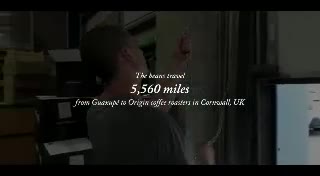3.2 Business-to-business marketing at work
Perhaps you are studying this with a cup of coffee to hand. Think for a moment of all the transactions that have contributed to getting that drink to you. The quality of what you are drinking right now might well depend on how well each supplier in the chain linking you to the coffee grower has understood their customer.
The same is true for practically any other type of goods or service you purchase as a consumer. Their availability to you depends on intricate chains of marketing relationships between businesses acting as customers and suppliers to one another.
Activity 9 Business-to-business marketing at work
Before you attempt to define business-to-business marketing, you will look at some examples of it in practice. This will make the exercise of defining it more meaningful.
Think of a cup of coffee as an example of the end result of a series of B2B marketing exchanges. The UK private members’ club Soho House manages its own supply chain to get coffee from bean to cup in its various restaurants and cafes.
Now watch Video 2, Soho House’s promotional video on how it sources coffee.

Use the text box to list the transactions you identify in the video, each of which involves a customer of some kind. The discussion will help you reflect on what the video implies about B2B customer behaviour.
Discussion
In this exercise, it’s less important to capture all the potential transactions than to realise the extent and nature of the B2B marketing activity illustrated.
The main transaction is between Soho House and the three coffee farms which grow beans to sell to it. The farmers are likely to be customers for machinery and maintenance services even though the video stresses manual processes (such as drying, where workers move the beans with wooden paddles) in line with the crafted, hand-made image of the product. The farm owners will also be customers for other services such as finance, power, transport, agricultural supplies and labour.
As customers, Soho House and the coffee roaster (Origin) are shown as closely involved, spending time on the farms themselves. This is likely to promote mutual understanding and give the farm owners a clearer idea of their customer’s requirements and motivations, which in theory should produce better results for all parties.
The dried beans travel over 5000 miles from Brazil to the UK, indicating the need for transport suppliers. The paying customer for transport depends on the terms of business. Whether transport is paid for by grower, roaster or Soho House, there will be an important customer relationship with the shipping and freight companies involved.
Advocates of fair trade argue that keeping value-adding processes like roasting within the country of origin is more equitable than just exporting raw materials direct. Wherever it is situated, the coffee roasting company (like the farm owners) will itself be a customer for power, transport, equipment and business or financial services.
The video shows the roasted beans being packed. B2B marketing will feature in the supply of the material and services involved such as packaging (plastic and card), design, print, transport and distribution. As with all the other exchanges we have listed, the more the supplier works to understand the needs and intentions of the customer, the better the outcome is likely to be.
Seeing the end to-end process of coffee from bean to cup reveals an extremely large number of transactions between multiple sets of business customers and suppliers. Your purchases, of coffee or practically anything else, are like the tip of an enormous iceberg of marketing carried out between organisations in an intricate network of exchange relationships. Understanding customer behaviour in a B2B context is therefore extremely important.
